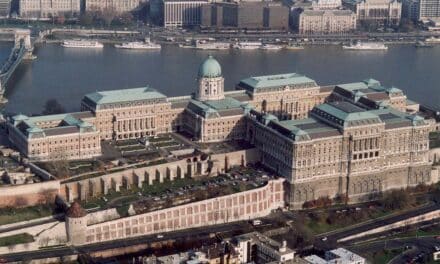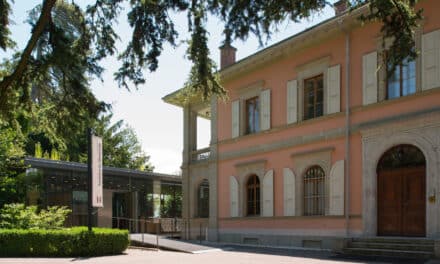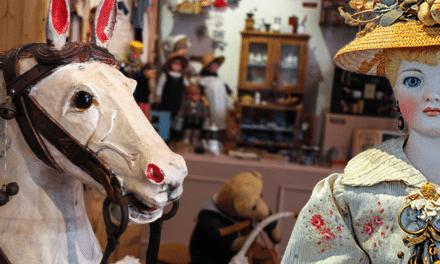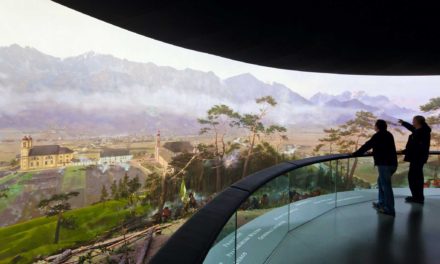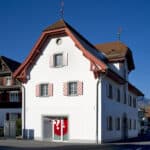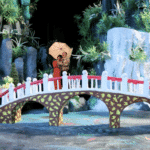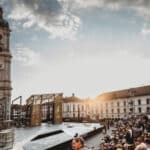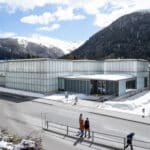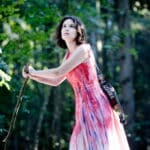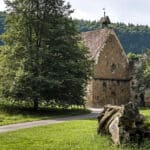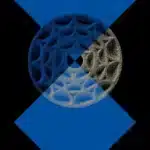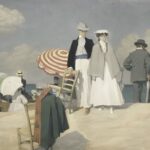Zurich's landmark is the Grossmünster. Legend has it that the church stands on the former burial place of the city's saints Felix and Regula. According to legend, Charlemagne discovered the tombs of the city's saints Felix and Regula on the present-day site of the Grossmünster and had the first church built as a canonry.
In the first half of the 16th century, the Grossmünster became the starting point of the Swiss-German Reformation under Huldrych Zwingli and Heinrich Bullinger. The theological school attached to the abbey at the time became the nucleus of Zurich University.
The stained glass window by Sigmar Polke, the Romanesque crypt, choir windows by Augusto Giacometti, bronze doors by Otto Münch and the Reformation Museum in the cloister are just some of the highlights that can be admired in the Grossmünster. Church music concerts are held regularly in the Grossmünster.
Choir window by Augusto Giacometti
Augusto Giacometti is part of the famous Giacometti dynasty of painters. Growing up just a few meters from the house of his cousin Giovanni Giacometti, he began to devote himself to painting at a young age. He trained as a drawing teacher at the Zurich School of Arts and Crafts between 1894 and 1897. After studying with Eugène Grasset in Paris from 1897 to 1901 and living in Florence and Zurich, he finally settled in Zurich in 1915.
In 1917, Giacometti met the Dadaists Tristan Tzara, Marcel Janco, Sophie Taeuber-Arp and Hugo Ball. He took part in the 8th Dada Soirée in Zurich's Kaufleutensaal and became a member of the artists' group "Das Neue Leben" (1918-1920).
With the execution of his design for the entrance hall of the police station in Zurich's Amtshaus I between 1923 and 1925, Giacometti created one of his most important works, also known as the Giacometti Hall. This commission, which immediately attracted a great deal of attention, paved the way for further important commissions.
He was one of the first artists of the 20th century to grant painting almost complete autonomy and to venture into non-objectivity. Giacometti subsequently became a great colorist. His gravestone reads: "Master of Color".
In 1929 he created the stained glass window in the east wall of the Protestant town church in Frauenfeld, in 1933 the choir windows in the Grossmünster, in 1937 the choir windows in the village church of Adelboden and in 1945 a church window in the Fraumünster.
The Grossmünster organ is an integral part of the church services, which are also enriched by the regular participation of choirs and ensembles. The wonderful instrument can also be experienced at numerous concerts.
The church windows by Sigmar Polke
The project "Sigmar Polke - Church Windows Grossmünster" goes back to a competition organized by the Grossmünster parish in 2005/06 (competitors: Sylvie Derfraoui, Olafur Eliasson, Katharina Grosse and Christoph Rütimann). In his project, Polke refers to the choir windows by Augusto Giacometti, which show the birth of Christ (1933). From the rear, western nave to the east - towards the choir windows - he places a time axis in the room. Seven windows made of agate sections are installed in the west. They represent the images of prehistoric times and the history of the earth congealed in stone. Five so-called prefigurations of Christ are placed against Giacometti's choir painting: These are Old Testament figures which, according to Christian interpretation, point ahead to Jesus. The motifs, executed by Polke using traditional glass techniques, show: the Son of Man, Elijah's Ascension, King David, the Scapegoat and the Sacrifice of Isaac. - A work of international appeal.
Bibles and writings
The Grossmünster houses a unique collection of Bibles and writings from the Reformation period. This treasure, previously under lock and key, is now being made accessible to the public. The permanent exhibition "Getruckt zů Zürich" in the gallery corner rooms of the two Grossmünster towers revolves around "Word and Image.
On display are valuable Bibles from the 16th to 18th centuries, including the earliest translations by Zwingli and his companions, the first translations into Italian, French and Romansh and the first Zurich State Bible, as well as key Reformation writings.
Let the valuable exhibits in the new permanent exhibition "Getruckt zů Zürich" take you back in time - to the place where the Reformation began 500 years ago.


